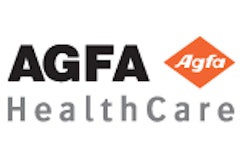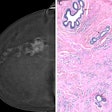Everybody loves a bargain, even when it comes to printers for full-field digital mammography (FFDM) images. Paper printers can bring serious savings to a healthcare institution, not to mention reduce environmental pollution and offer faster delivery time. In comparison, wet laser printers produce superior images but do so at a higher cost. They also require chemical development, are less environmentally friendly, and require special handling.
As with many things in life, the best price doesn't always equal best quality. Austrian researchers performed a head-to-head comparison of FFDM images printed with a wet laser and a paper printer, determining that the latter "fails to reach the high-quality requirements for FFDM assessment." They published their results in the Women's Imaging supplement of the American Journal of Roentgenology (January 2006, Vol. 186:1, pp. 38-45).
For this study, Dr. Gerd Schueller and colleagues from University Hospital Vienna and the Medical University of Vienna used a Scopix LR 5200 wet laser printer (Agfa HealthCare, Mortsel, Belgium) with a blue-base film (Scopix Laser LT 2, Agfa HealthCare) and Xerox's DICOM DocuColor 50 paper printer with Colortec commercial copy paper. Both printers were connected to the FFDM system (Senographe 2000D, GE Healthcare, Chalfont St Giles, U.K.) via a network.
The team compared the image quality parameters of both printers using a standardized printer test image and an ACR phantom, as well as mammograms from the FFDM system.
With the printer test image, the study authors reported that no difference in image quality of the printers was observed based on visual inspection of the image elements, such as lines, curves, and shapes. The luminance range for the wet laser printer was 3.6 cd/m2 LV to 1,190 cd/m2 LV. For the paper printer, the range was 224 cd/m2 LV to 1,700 cd/m2 LV.
"Exposure of the ACR phantom was performed on the FFDM system in automatic mode, and the processed image was printed.... The evaluation of wet laser printed images was performed on a viewing box with a luminance greater than 3,000 cd/m2.... The evaluation of paper printer images was performed using a desk light with a 100-W bulb," Schueller's group wrote.
With the phantom, 13 of 16 small objects were visible on the wet laser print versus 11 of 16 with the paper printout. The wet laser printer was more sensitive (80%) than the paper printer (40%) for the evaluation of specks.
For the mammograms, a total of 640 FFDM images were obtained and printed from 80 patients with varying breast densities. Each of the images was evaluated by two radiologists in unlabeled, random order. The reviewers compared the images for brightness, contrast, and anatomic detail, and rated the images as good, moderate, or poor.
Of the 2,240 subjective image quality scores per printer system for the mammograms, 99.5% of the wet laser images were rated as good. Paper did not fare as well, with only 11.1% rated good and 62.9% rated as poor. Finally, 23% of the masses and 26% of the calcifications were not seen on the paper printer images at all.
The authors placed particular importance on the last result. "Even if written reports were attached to hard copies, we think that subtle, but nevertheless crucially important, details -- for example, calcifications -- would not be reproducible if the hard copies were printed by a paper printer," they wrote.
Ultimately, the low cost associated with a paper printer cannot compensate for the low image quality, the authors stated. They recommended against using a paper printer with FFDM as the dynamic range of the wet laser printer was far superior.
By Shalmali Pal
AuntMinnie.com staff writer
January 9, 2006
Related Reading
Image compression method may make large mammo datasets more manageable, December 22, 2005
Digital library can ease transition to digital mammo, October 26, 2005
Flat-panel unit beats CR for digital mammography, March 7, 2003
Copyright © 2006 AuntMinnie.com



















